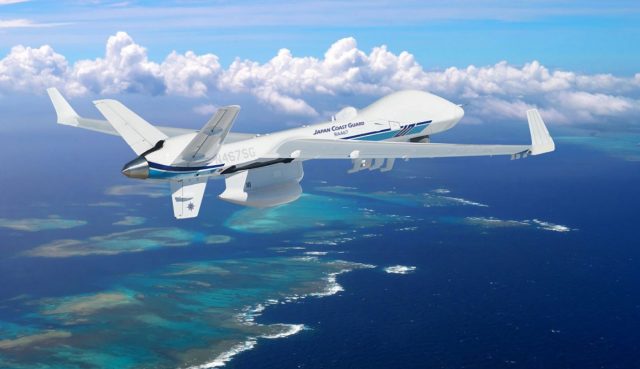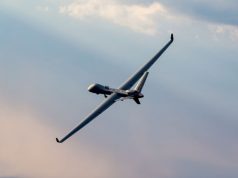General Atomics Aeronautical Systems, Inc. (GA-ASI) says it has been selected to take part in the Japan Maritime Self-Defense Force (JMSDF) Medium-Altitude, Long-Endurance (MALE) RPAS trial operation project.
The project will feature the company’s MQ-9B SeaGuardian, with a starting date in April this year.
The JMSDF trial will come after the Japan Coast Guard began official operations with the SeaGuardian in October last year from the JMSDF Air Station Hachinohe. With the coast guard, the RPA primarily performs maritime wide area search (MWAS) over the Sea of Japan and the Pacific Ocean, with other missions including search and rescue, disaster response, and maritime law enforcement.
With the navy, the SeaGuardian will undergo various tests to prove its adaptability to support JMSDF’s manned-unmanned teaming missions and its level of manpower reduction. The Japanese government announced that Japan Coast Guard and JMSDF will be exchanging the data obtained by the MQ-9Bs operated for each of the government’s branches.
According to local reports from earlier this year, the JMSDF is evaluating an option to cut the current fleet of 33 manned P-1 patrol airplanes and 75 SH-60K helicopters in favor of unmanned platforms. Other branches of Japan’s armed forces are reportedly also evaluating the shift in focus to favor unmanned systems.
“We’re pleased to support the JMSDF’s trial operation with our SeaGuardian UAS,” said GA-ASI President David R. Alexander. “We know there is a need in Japan and worldwide for affordable long-endurance airborne surveillance in the maritime domain.”
SeaGuardian features a multi-mode maritime surface-search radar with an inverse synthetic aperture radar (ISAR) imaging mode, an automatic identification system (AIS) receiver, and a full-motion video sensor equipped with optical and infrared cameras. This sensor suite enables real-time detection and identification of surface vessels over thousands of square nautical miles and provides automatic tracking of maritime targets and correlation of AIS transmitters with radar tracks.



























